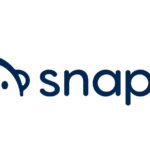It is a much discussed topic, online checkout. Companies are becoming more and more aware of the necessity of optimizing the online checkout, the checkout process. The speed of checkout is of the utmost importance, but as a merchant you also want as much data as possible about who has actually bought. The added value of a conversion is mainly in the repeat purchases. After all, you want your customer to come back for another order. You increase that chance with online personalization and you feed that with data.
______
Personalization vs Guest checkout
Online checkout is only more complex than in-store checkout because it requires verifying your customers’ identities and confirming the place of delivery. For example, am I really talking to my customer and not to a fraudster with a stolen credit card?
However, customers often prefer not to create an online account. Log in every time with username and password. Forgot your password (obviously), create a new password, it’s driving people crazy. Make sure the checkout doesn’t go wrong and make it easy for your clients. Without your customers having to create an account in each and every online store. So you should at least offer the option of a “guest checkout”. Unfortunately, when using a guest checkout, it is not possible to personalize the customer experience, the checkout process also takes longer and there is a greater chance of drop-offs.
Another interesting development is the “Cookie Apocalypse”. This is the announcement that 3rd party cookies (ie cookies generated by a domain other than the domain that the user is visiting) will no longer be possible and tracking your customer/conversion will become much more difficult.
Since Google was the last but largest global web browser to announce that it will no longer support third-party cookies from 2023, it has come to be called the “Cookie Apocalypse” or “Death of the 3rd party cookie”. After this we will therefore enter a so-called “Post Cookie World”. Quite a challenge for marketers.
An additional advantage is that you no longer pay for that Google Display advertising while your customer had already bought his washing machine last week. And that same customer no longer has to be confronted with, and frustrated by, that “overload” of a display ad that all too often misses its target.
But how are you going to recognize customer profiles if 3rd party cookies are a thing of the past. A username and password on every web shop, so a separate account everywhere? Tracking is then possible, but time and again that is a cumbersome process and most customers would rather avoid that.
Another growing problem for merchants is giving away personalization data to marketplaces such as Amazon and ManoMano. Due to the popularity of the marketplaces and the enormous traffic, a merchant can no longer ignore the marketplaces. But these marketplaces know much more about their customers than the “sellers” on their platform and can use this data for retargeting themselves.
Identity powered payments / Headless checkout
Amazon’s one-click checkout was a patented method that eliminated all the hassle of re-entering passwords, delivery and payment information. The patent for that process expired four years ago.
To stay in the lead as a merchant, there is a need for the so-called “Identity powered payments” or “Headless checkout”. This means that customers do not have to create an account in the web shop every time, but they can still leave the web shop quickly and paid. This is currently already possible with PayPal, for example, but of course without free choice of payment method and that is not desirable everywhere in the cost vs conversion consideration. Identity powered payments / Headless checkout is integrated more deeply into the platform than usual with a PSP and this makes a fast checkout and pleasant customer experience with personalization, coupons, loyalty, free choice of payment method, all possible.
The ideal online checkout
Parties try to get as close as possible to the conversion and to get the “buying experience” within their platform. We see this development, for example, with Facebook and Instagram, but also with parties that offer headless checkout. They will soon enable you to create so-called “shoppable stories”, from email to blogs, on any screen, and in direct contact with your customer. This is the so-called “contextual targeting” or “contextual commerce”. This involves bringing the needs of the customer and the subsequent conversion closer together, but also maintaining access to personalization data. By using one uniform login with Identity powered payments, a cooperative way of collecting data will be created. The more merchants that join, the greater the support and the higher the value of the data. So optimal insight into the “shopper lifecycle”. On the other hand, it will also provide the customer with advantages to keep track of their orders in one place, view their purchase history and participate in loyalty programs. In short, the ideal online checkout. Until we can make use of these advanced checkout options, we will have to continue to optimize the customer experience during the checkout process through insights from usability reports and a/b testing.
This article has been published (in Dutch) on Frankwatching. Publication date: 13th September 2021.





